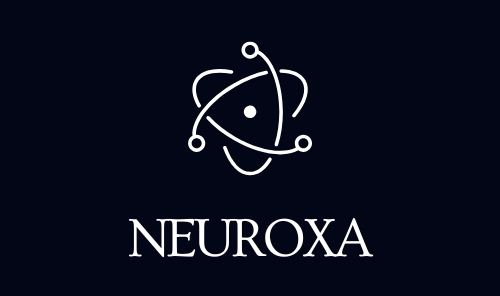Introduction: The New Study Paradigm
The way students learn has fundamentally changed. 92% of students report using AI tools like ChatGPT and Gemini regularly in 2025. This rapid adoption is driven by one fact: AI is the ultimate tool for active learning and personalization.
Traditional studying involves passive activities like reading, highlighting, and re-reading, which are ineffective for deep retention. AI transforms this: instead of passively consuming information, students use their class materials to actively generate custom study aids, forcing them to recall, synthesize, and apply knowledge.
Studies show that students in AI-enhanced active learning programs achieve 54% higher test scores than those in traditional environments. When used responsibly, your free LLM becomes an instantaneous, infinitely patient tutor that knows exactly where you need help.
This guide focuses on three high-impact, ethical ways students can use GenAI as their personal study buddy, saving time and increasing academic performance.
Section 1: Use Case 1: Mastering Content with Custom Summaries
The most basic use of AI is summarization, but the true power is in demanding a summary that is tailored to your specific learning style or need. This is the first step in moving from passive reading to active engagement.
Summary Prompt Tactics for Different Needs
The key is to upload the lecture notes, textbook chapter, or PDF (using Gemini’s file upload feature) and demand a summary that forces synthesis.
| Learning Need | AI Prompt Tactic | Resulting Output |
| Synthesis & Connections | “Summarize this [Document] into 5 key takeaways. For each takeaway, explain the cause-and-effect relationship between that idea and [Concept X] from a previous chapter.” | Forces the student to make complex connections, moving beyond rote memorization. |
| Visual/Conceptual Learners | “Summarize this text in the style of a mind map or conceptual diagram. Use only 10 words per concept and show the relationship between [Main Concept 1] and [Main Concept 2] using arrows and labels.” | Provides a structured, visual framework for complex information. |
| Auditory Learners | “Read the provided text and summarize the key arguments in the form of a 2-minute podcast script suitable for a high school audience. Focus on simple vocabulary and persuasive language.” | Generates spoken-word material that reinforces learning through auditory channels. |
| Exam Prep Focus | “Summarize this content, highlighting only the definitions, dates, and names most likely to appear on a Multiple Choice exam.” | Creates a concentrated cheat sheet for low-level recall questions. |
Section 2: Use Case 2: Targeted Assessment with Quiz Generators
Creating a quiz from scratch is tedious. Having the AI generate one from your own notes is the fastest way to test comprehension and identify weak spots. Gemini and ChatGPT can generate fully interactive quizzes that provide explanations after wrong answers.
AI Quiz Generation Prompt Blueprint
- Input the Material: (Upload PDF, paste text, or link to a source).
- Define the Test Type: (Multiple Choice, Short Answer, True/False, Fill-in-the-Blank, etc.).
- Define the Difficulty and Goal: (E.g., “Intermediate level, designed to check for deep comprehension of the processes, not just vocabulary.”)
- Demand Explanation: (Crucial for active learning!)
| Quiz Goal | High-Impact Prompt Tactic | Active Learning Benefit |
| Recall Check | “Generate a 10-question True/False quiz on the provided notes. If I answer incorrectly, immediately provide the correct answer and cite the line number from my notes where the correct information can be found.” | Reinforces specific facts and helps the student find the mistake in their notes. |
| Application & Analysis | “Generate 3 short-answer questions that require me to apply the principles of [Concept X] to a real-world scenario (e.g., historical event or business case study).” | Prepares the student for the critical thinking required in higher-stakes exams. |
| Debate/Critical Thinking | “Generate 1 essay prompt that forces me to argue both sides of the ethical debate surrounding [Topic Y]. Provide a bulleted list of 5 arguments for each side to get me started.” | Provides scaffolding for complex argumentative essays and prepares for debate. |
Section 3: Use Case 3: The Adaptive Learning Path
The AI Study Buddy can go beyond single quizzes to structure an entire study session, mimicking the function of an expensive adaptive learning platform.
Creating a Focused Study Session
When you tell the AI where you struggled, it can dynamically adjust your entire schedule:
- Diagnostic Prompt: “Based on my answers to the last quiz, I struggled most with [Topic A] and [Topic B]. Generate a 60-minute personalized study plan focusing on these two areas.”
- The AI Plan: The AI will output a detailed schedule:
- 0:00–0:15: Review the summarized notes on [Topic A].
- 0:15–0:30: Generate 10 new multiple-choice questions on [Topic A] only, and re-take the quiz.
- 0:30–0:45: Generate 5 complex analogy questions comparing [Topic A] and [Topic B] to test synthesis.
- 0:45–1:00: Review the key arguments for [Topic B] and identify 3 potential exam questions.
This creates a responsive feedback loop where the study plan is driven by demonstrated weakness, not a generic schedule.
Section 4: Ethical & Responsible Use Guardrails
The power of AI comes with the ethical obligation of academic integrity. Using AI to learn is encouraged; using it to circumvent learning is not. Students must understand the difference.
The Student’s Ethical Checklist
| Core Principle | Ethical Use (Recommended) | Unethical Use (Avoid) |
| Originality | Using AI for brainstorming, outlining, and refining drafts. | Submitting any AI-generated text as your own work without substantial, original revision and human thought. |
| Transparency | Citing AI assistance as required by your instructor (e.g., using an APA or MLA AI citation). | Failing to disclose AI use when submitting assignments, particularly for essays. |
| Verification | Treating every AI-generated fact, statistic, or explanation as a starting point to be verified with a reliable source. | Relying on AI’s output without checking its accuracy, especially for dates or references (hallucinations are common). |
| Critical Thinking | Using AI quizzes and explanations to challenge your understanding and improve your reasoning. | Copying AI answers directly into a quiz or assignment without engaging with the material. |
The key is that the final output must be a reflection of your own critical analysis. The AI is a tool, not a co-author.
Conclusion: The Architect of Learning
By using LLMs like ChatGPT and Gemini strategically, students move from being passive recipients of education to active architects of their own learning. The AI Study Buddy automates the creation of resources, quiz generation, and personalized planning, reducing wasted effort and focusing study time where it delivers the highest returns.
Embracing this technology responsibly allows students to not only master their current subjects but also to develop crucial AI literacy skills—prompt engineering, fact verification, and critical evaluation—that are essential for thriving in the modern workforce.
Source List
- Programs.com:New Data: 92% of Students Use AI Tools Regularly (November 2025)
- HEPI (Higher Education Policy Institute):Student Generative AI Survey 2025 (February 2025)
- Engageli:20 Statistics on AI in Education to Guide Your Learning Strategy in 2025 (November 2025)
- Cornell University Center for Teaching Innovation:Ethical AI for Teaching and Learning (2025)
- MDPI (Multidisciplinary Digital Publishing Institute):The Impact of Artificial Intelligence (AI) on Students’ Academic Development (March 2025)









